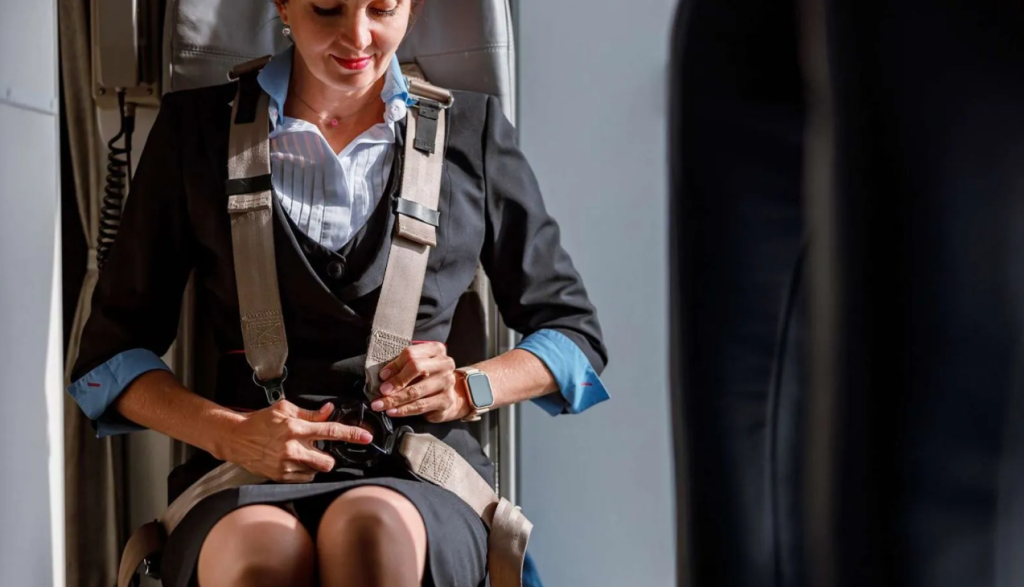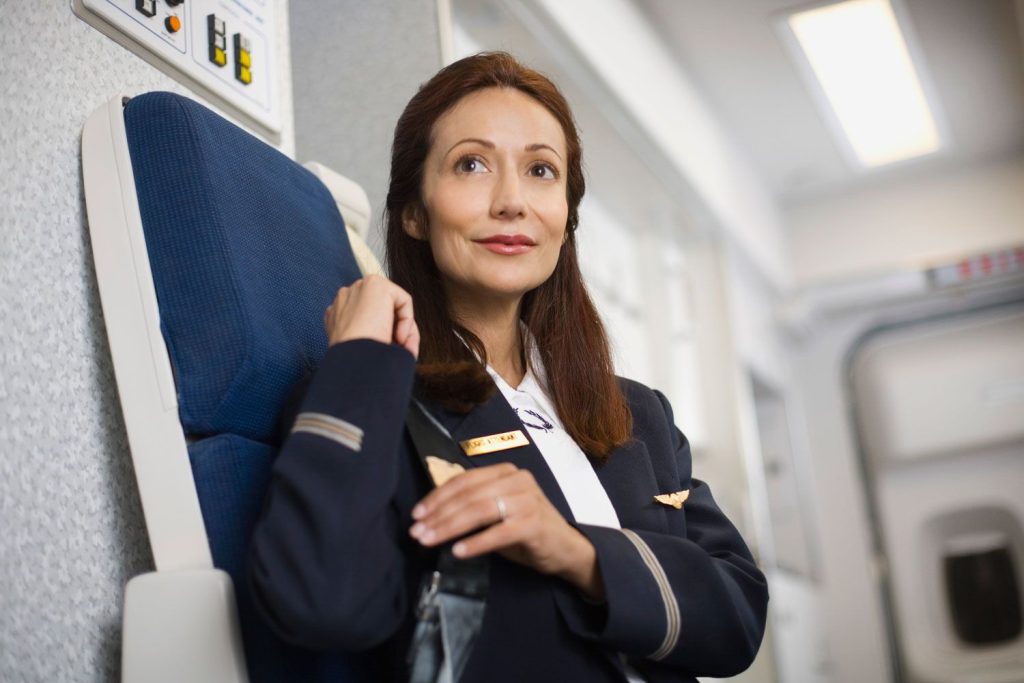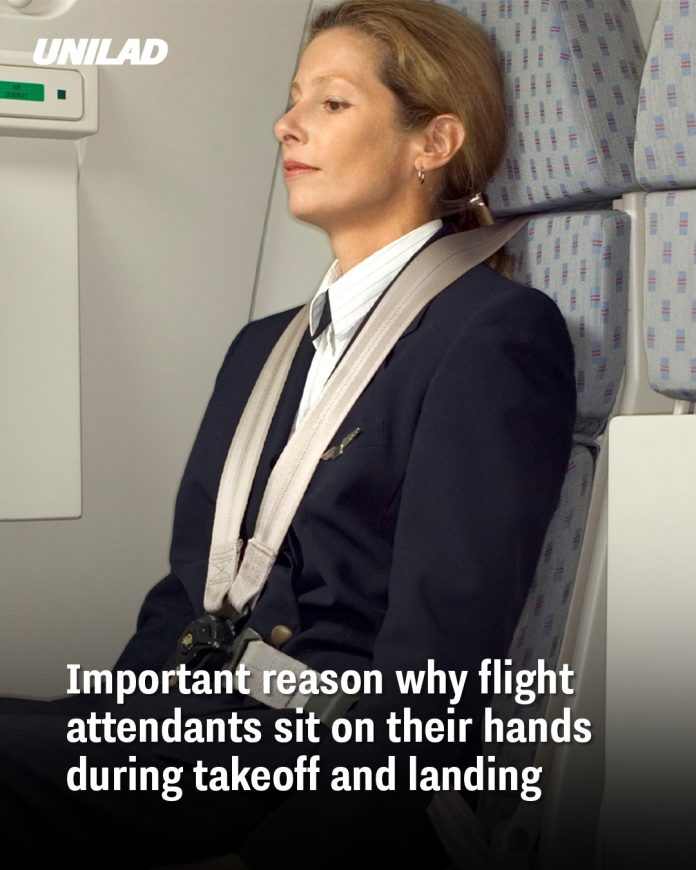Flight attendants play a crucial role in ensuring passenger safety and comfort during flights. One practice that often piques passengers’ curiosity is why flight attendants sit on their hands during takeoff and landing. This behavior is not arbitrary; it serves specific safety and operational purposes.
The Brace Position: A Safety Protocol
The primary reason flight attendants sit on their hands during critical phases of flight is to adopt the brace position, a posture designed to protect the body in the event of an impact. This position helps minimize movement and potential injuries during sudden deceleration or turbulence. According to flight attendant Henny Lim from Cebu Pacific, the brace position involves:
- Fastening the seatbelt securely
- Sitting upright
- Sitting on hands with palms up and thumbs tucked
- Keeping arms loose
- Placing feet flat on the floor
Lim explains that this posture aims to keep the body rigid, reducing the risk of injury during unforeseen emergencies.
Conducting a Silent Review
While seated in the brace position, flight attendants also perform a silent review. This mental rehearsal involves recalling emergency procedures, such as door operations, evacuation commands, and the location of safety equipment. This practice ensures that crew members remain vigilant and prepared to respond swiftly in case of an emergency.

Variations in Brace Positions
It’s important to note that brace positions can vary depending on the airline, aircraft type, and seat orientation. For instance, flight attendants in forward-facing seats might rest their chin on their chest, while those in rear-facing seats may press their head against the headrest. These variations are designed to offer optimal protection based on specific seating configurations.
Passenger Safety Measures
Passengers are not required to adopt the same brace position as flight attendants. Instead, they should focus on fastening their seatbelts low and tight across their hips and following crew instructions. Remaining seated with seatbelts securely fastened during takeoff and landing is vital for passenger safety.
Misconceptions and Clarifications
Some passengers might interpret flight attendants sitting on their hands as a sign of nervousness or discomfort. However, this practice is a deliberate safety measure. Additionally, while passengers might be tempted to mimic this behavior, it’s essential to understand that flight attendants undergo extensive training to handle various in-flight situations, and their practices are tailored to their specific roles.
The Science Behind the Brace Position
The brace position that flight attendants adopt is backed by extensive research and testing conducted by aviation safety experts. Studies have shown that properly positioning the body during an impact can significantly reduce injuries by absorbing shock and preventing excessive movement. The posture minimizes the risk of head, neck, and spinal injuries by ensuring that flight attendants remain as stable as possible.
Additionally, the act of sitting on their hands with palms facing upwards serves multiple purposes. This technique helps flight attendants brace their arms, preventing them from flailing in case of a sudden impact. It also ensures their hands are readily available to quickly unbuckle their seatbelts and assist passengers in an emergency evacuation.

Real-Life Examples of Emergency Situations
There have been numerous incidents where the brace position has proven to be effective in preventing serious injuries. In crash investigations, aviation experts have found that passengers and crew members who correctly adopted the brace position had a higher chance of survival and suffered fewer injuries.
For instance, in the 2009 US Airways Flight 1549 emergency landing on the Hudson River, passengers and crew members who followed safety protocols, including bracing for impact, were able to exit the aircraft with minimal injuries. Flight attendants, who had practiced and mentally rehearsed emergency procedures, played a crucial role in the safe evacuation of all passengers on board.
Another example is the British Airtours Flight 28M accident in 1985, where a fire broke out on the aircraft during takeoff. While the fire led to tragic losses, those who followed safety instructions, including bracing and quick evacuation, had a significantly higher survival rate.
Conclusion
The practice of flight attendants sitting on their hands during takeoff and landing is a critical safety protocol designed to protect both the crew and passengers. By adopting the brace position and conducting silent reviews, flight attendants ensure they are prepared to manage emergencies effectively. Understanding these practices can provide passengers with greater insight into the meticulous safety measures that contribute to a secure flying experience.

















